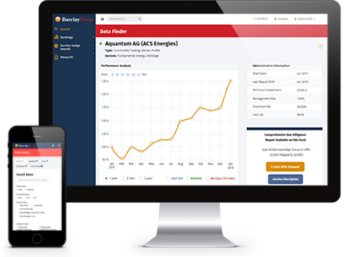Hedge fund strategies are the driving force behind a hedge fund manager's ability to generate returns for his investors. One of the most prolific strategies is the global macro strategy, which focuses on investing in instruments whose prices fluctuate based on the changes in economic policies, along with the flow of capital around the globe.
Global macro strategies generally focus on financial instruments that are broad in scope and move based on systemic risk. Systemic risk or market risk is not security specific. In general, portfolio managers who trade within the context of global macro strategies focus on currency strategies, interest rates strategies, and stock index strategies.
Currency Strategies
Currency portfolio management strategies generally focus on the relative strength of one currency versus another. A currency pair is quoted as one currency's relative value to another currency and the pair fluctuates based on a number of different factors.
Currency traders follow global economic and monetary policy along with the difference between one country's short term interest rates relative to its counter currency. Major currency pairs, which are developed nations' currencies versus the US dollar, are extremely liquid and trade 24 hours a day, 6 days a week. The majority of currency trading takes place in the interbank market. Settlement usually occurs within 2 trading days which is why it is also referred to as the spot market.
One major advantage of trading currencies is the leverage employed in the market can range as high as 100-1. This means for every dollar allocated to a currency transaction, $99 dollars can be borrowed. This type of leverage allows currency traders to enhance their gains, but it creates substantial risks of loss to an investor.
Currency instruments include futures contracts, over the counter spot transactions, option instruments and forward rate instruments.
Interest Rate Trading
Interest rate portfolio managers, who focus on global macro strategies, generally invest in instruments that follow the rates of sovereign global debt. This includes US Treasury instruments, European debt instruments, as well as other developed and emerging nation government debt. The majority of these types of instruments are traded in either the cash or derivatives markets which are dominated by institutional funds along with banks and investment banks. Leverage within the debt markets are not as high as leverage within the currency markets, but is still relatively substantial. Most of the derivative transactions traded on government debt take place on regulated futures exchanges. Strategies include outright directional movements on government debt along with relative value trading in which a portfolio manager trades one debt instrument relative to another. Debt instruments are available on futures exchanges, over the counter markets and options contracts.
Stock Index Trading
Equity Index portfolio managers use equity indexes to create investment portfolios that will outperform when interest rates are moving lower (or neutral), and growth within the home country of the equity index are on the rise. In general, index strategies are directional, but many portfolio managers trade indexes in a spread format and use these instruments to create relative value strategies. Equity indexes are available on futures exchanges, options exchanges, and also as exchange traded funds. Global macro strategies focus on liquid assets that usually do not include risks other than market risks such as credit risk or liquidity risks. Many managers use technical analysis along with fundamental factors to drive their trading decisions. Some managers will employ commodity strategies and use broadly followed markets such as oil, gold and silver. These types of instruments usually generate potential profitable price trends during inflationary and deflationary environments. The key to success is to employ strong risk reward controls on a portfolio and follow economic and monetary influences that can change the scope of global capital flows.
Get comprehensive and up-to-date information on 6100 + Hedge Funds, Funds of Funds, and CTAs in the Barclay Global Hedge Fund Database.


